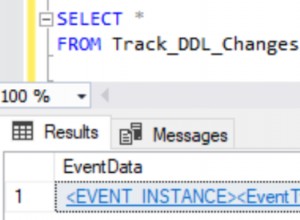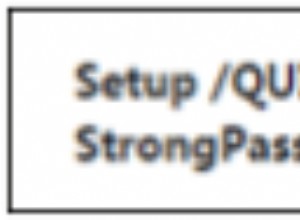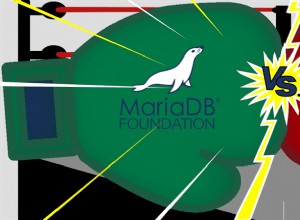Non c'è alcuna "ricorsione" in atto qui e penso che sia qui che ti confondi.
Dalla documentazione di PostgreSQL:http://www.postgresql.org/docs/9.4/static/queries-with.html
Note: Strictly speaking, this process is iteration not recursion,
but RECURSIVE is the terminology chosen by the SQL standards committee.
Per parafrasare questa frase, un WITH RECURSIVE può essere visto come un semplice WHILE ciclo.
WITH RECURSIVE t(n) AS (
VALUES (1)
UNION ALL
SELECT n+1 FROM t WHERE n < 100
)
SELECT * FROM t;
Ecco uno pseudo-codice personalizzato per spiegare questo processo in dettaglio
# Step 1: initialisation
LET cte_result = EMPTY
LET working_table = VALUES (1)
LET intermediate_table = EMPTY
# Step 2: result initialisation, merge initialisation into cte_result
cte_result = cte_result UNION working_table
# Step 3: iteration test
WHILE (working_table is not empty) DO
# Step 4: iteration select, we substitute the self-reference with working_table
intermediate_table = SELECT n+1 FROM working_table WHERE n < 100
# Step 5: iteration merge, merge the iteration result into cte_result
cte_result = cte_result UNION intermediate_table
# Step 6: iteration end, prepare for next iteration
working_table = intermediate_table
intermediate_table = EMPTY
END WHILE
# Step 7: return
RETURN cte_result
E usando un esempio
# Step 1: initialisation
cte_result: EMPTY | working_table: 1 | intermediate_table: EMPTY
# Step 2: result initialisation
cte_result: 1 | working_table: 1 | intermediate_table: EMPTY
# Step 3: iteration test
count(working_table) = 1 # OK
# Step 4: iteration select
cte_result: 1 | working_table: 1 | intermediate_table: 2
# Step 5: iteration merge
cte_result: 1, 2 | working_table: 1 | intermediate_table: 2
# Step 6: iteration end
cte_result: 1, 2 | working_table: 2 | intermediate_table: EMPTY
# Step 3: iteration test
count(working_table) = 1 # OK
# Step 4: iteration select
cte_result: 1, 2 | working_table: 2 | intermediate_table: 3
# Step 5: iteration merge
cte_result: 1, 2, 3 | working_table: 2 | intermediate_table: 3
# Step 6: iteration end
cte_result: 1, 2, 3 | working_table: 3 | intermediate_table: EMPTY
# … 97 more iterations and you get this state
cte_result: 1, 2, …, 100 | working_table: 100 | intermediate_table: EMPTY
# Step 3: iteration test
count(working_table) = 1 # OK
# Step 4: iteration select, the iteration query does not return any rows due to the WHERE clause
cte_result: 1, 2, …, 100 | working_table: 100 | intermediate_table: EMPTY
# Step 5: iteration merge, nothing is merged into the cte_result
cte_result: 1, 2, …, 100 | working_table: 100 | intermediate_table: EMPTY
# Step 6: iteration end
cte_result: 1, 2, …, 100 | working_table: EMPTY | intermediate_table: EMPTY
# Step 3: iteration test
count(working_table) = 0 # STOP
# Step 7: return
cte_result: 1, 2, …, 100
Quindi il risultato del CTE sono tutti i numeri da 1 a 100.




